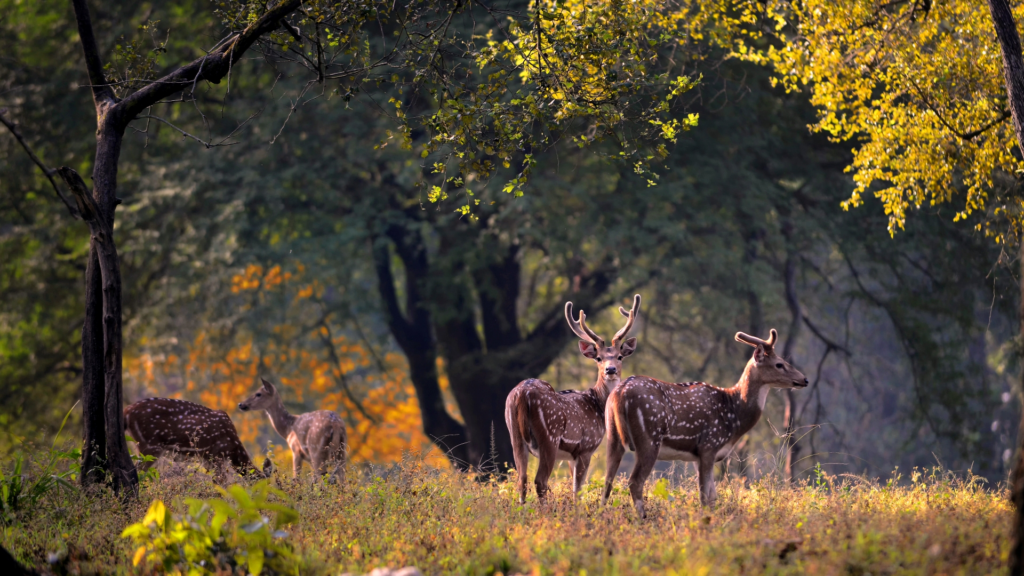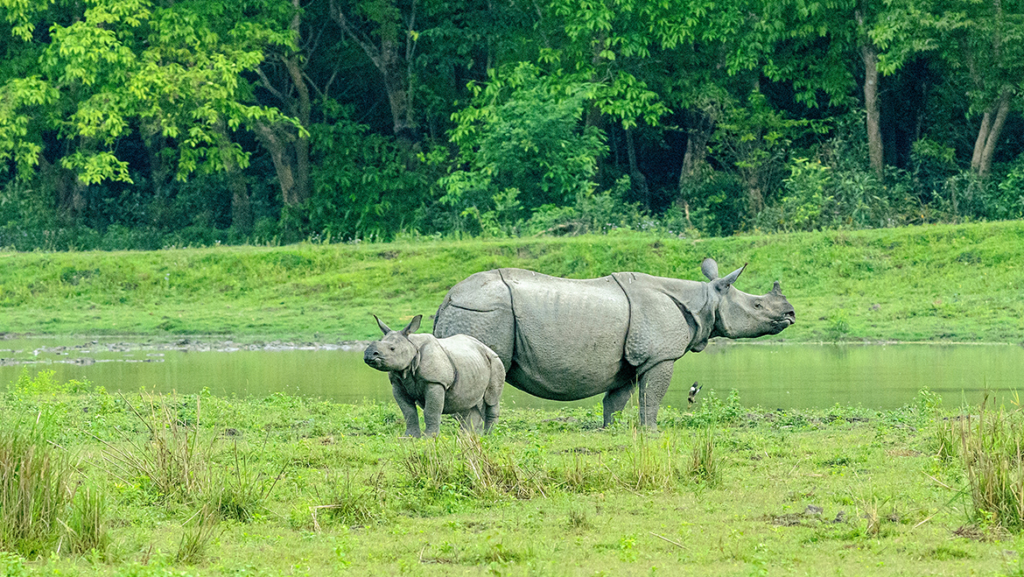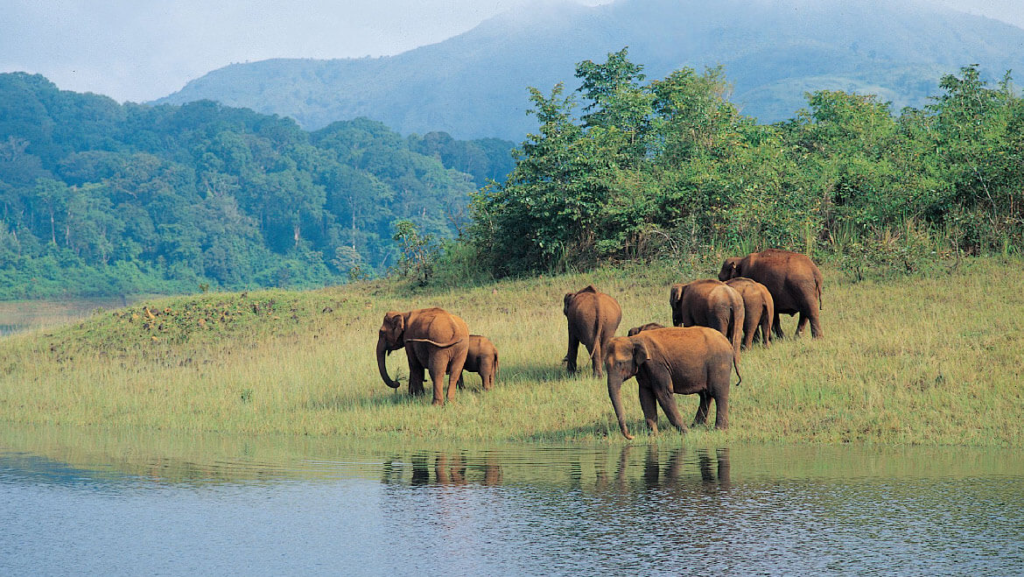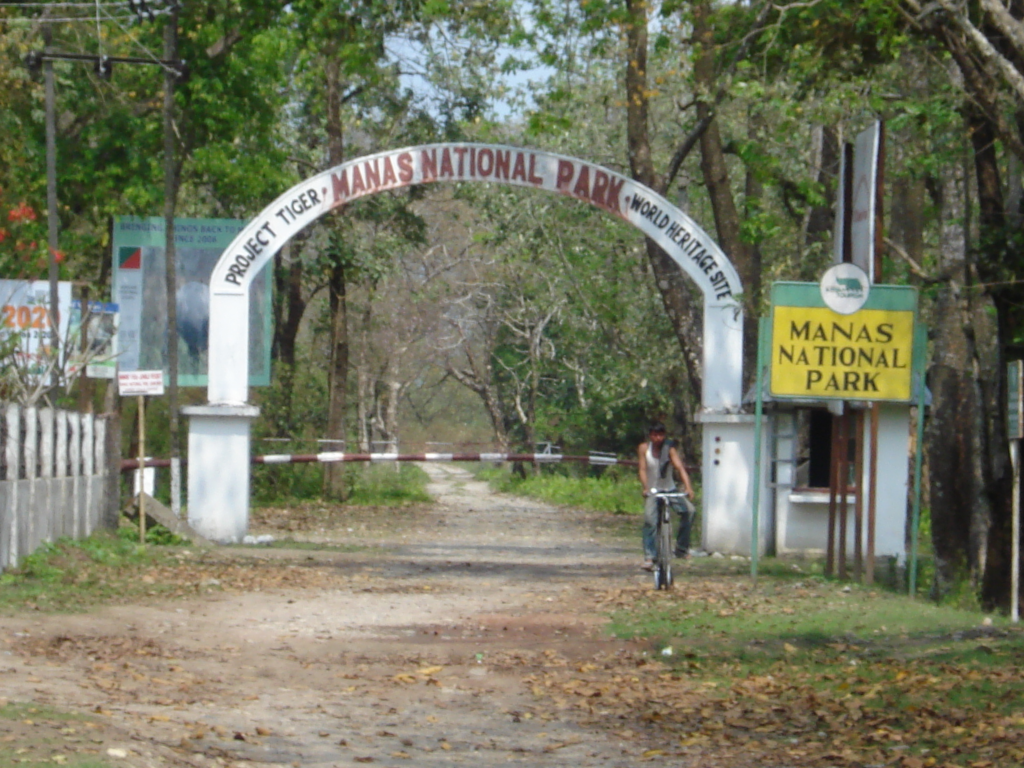India’s national parks fall under class II protected areas, as designated by the IUCN (International Union for Conservation of Nature). The first national park in India, Jim Corbett National Park, was established in 1936 in the Uttarakhand region. By 1970, there were only five national parks in India. However, in 1972 and 1973, India took significant steps to protect wildlife habitats by introducing the Wildlife Protection Act and Project Tiger, respectively.
As of December 2020, India had 106 national parks, covering an area of 44,378 km2 (17,134 sq mi), which accounts for 1.35% of the country’s total area, according to the National Wildlife Database. The Protected Area Network Report suggests the need for an additional 75 National Parks, covering an area of 16,608 km2 (6,412 sq mi). If fully implemented, the study above will result in a total of 176 new national parks.
Jim Corbett National Park

The Special Tiger Territory in India is known for being the father of Project Tiger, an initiative aimed at protecting endangered species, including India’s Royal Wild Animal, the Tigers. The project is centered in the largest Corbett Tiger Reserve, which is part of the Jim Corbett National Park in the Nainital region of Uttarakhand.
Corbett’s majestic scenery is renowned for its abundant tiger population. Originally established as Hailey National Park in 1936, it is now India’s oldest and most famous National Park. Additionally, it gained further prominence as the site for Project Tiger’s launch in 1973.
Ranthambore National Park

Ranthambore, one of the largest and most renowned national parks in Northern India, is situated in the Sawai Madhopur region of southeast Rajasthan, approximately 130 kilometers from Jaipur. Covering a total area of 1,334 km2 (515 sq mi), the park is defined by the Banas River to the north and the Chambal River to the south.
The park’s name, Ranthambore, is derived from the presence of the famous Ranthambore Fort located within its boundaries.
Originally established as the Sawai Madhopur Game Sanctuary in 1955, it covered an area of 282 km2 (109 sq mi). In 1973, Ranthambore received the prestigious designation of a Project Tiger reserve, and on November 1, 1980, it was officially declared a national park. The neighboring forests saw the establishment of the Sawai Man Singh and Keladevi Sanctuary in 1984.
Kanha National Park

The park’s fame is due to its thriving population of tigers, and the chances of spotting one have increased in recent years, delighting nature lovers. As one of India’s largest national parks, it encompasses a core area of 940 square kilometers (584 sq mi) and a surrounding region of 1,005 sq. km (625 square miles). Located in the state of Madhya Pradesh, southeast of Jabalpur, Kanha National Park has three entry gates. The major entrance, Khatia Gate, is situated 160 kilometers (100 miles) away from Jabalpur through Mandla.
Another entry point is Mukki, reachable from Jabalpur in approximately 200 kilometers via Mandla-Mocha-Baihar. Between Khatia and Mukki, visitors can drive through the park’s buffer zone.
The Sarhi Gate, located around 8 kilometers from Bichhiya, is situated about 150 kilometers from Jabalpur through Mandla on National Highway 12.
Kaziranga National Park

Kaziranga National Park and Tiger Reserve house the world’s largest population of one-horned rhinoceroses, and it received UNESCO World Heritage Site status in 1985. The park is a sanctuary for two-thirds of all one-horned rhinos globally, making it a critical conservation area for this species.
Situated in the northeastern part of India, in the state of Assam, Kaziranga lies away from typical tourist routes, offering a unique and off-the-beaten-path experience for adventurous visitors. Nestled in the Eastern Himalayan foothills, the park is renowned for its exceptional biodiversity and untouched forest landscapes, creating a haven of natural beauty.
While the one-horned rhinoceros is a major attraction, thriving in the park’s marshy grasslands, Kaziranga is also home to a plethora of other fascinating species. Formally recognized as a tiger reserve, the park is inhabited by tigers, although sightings may be rare.
Sundarbans National Park

The Sundarbans National Park in India, specifically in West Bengal, holds the distinction of being a national park, tiger reserve, and biosphere reserve. Situated in the Ganges Delta, the park is part of the larger Sundarbans and is in close proximity to Bangladesh’s Sundarban Reserve Forest, located to the southwest. Initially, the central region of the present Sundarban National Park and the Sundarban Tiger Reserve were designated as wildlife sanctuaries in 1977 and 1973, respectively. The park received national park status on May 4, 1984, and has since garnered multiple prestigious recognitions. It was declared a UNESCO World Heritage Site in 1987 and has been part of the Ramsar site since 2019.
Additionally, the Sundarbans has been recognized as a member of the World Network of Biosphere Reserves since 1989, highlighting its importance as a global conservation area. The Sunderban Tiger Reserve spans a total geographical area of 2585 km2, with approximately 1437.4 km2 designated as populated areas and the remaining 1474 km2 covered by forests.
Gir Forest National Park

Initially starting with only 12 lions, the population in Gir National Park has grown significantly to approximately 600 lions today. Apart from lions, visitors can also spot various other animals in the park, including sambar, chinkara, chital, porcupines, wild boars, and black deer, among others. For a chance to witness the diverse wildlife, vehicle safaris are available during the morning, late afternoon, and evening hours. Situated in Gujarat, India, the park is located 60 kilometers (37 km) south of Amreli, 65 km (40 mi) east of Junagadh, and 43 km (27 mi) north of Somnath, near Talala Gir.
Gir National Park is one of India’s most renowned national parks, offering an unforgettable experience for nature enthusiasts and wildlife lovers. However, it’s essential to plan your visit accordingly, as the park remains closed every year during the monsoon season, from June 16 to October 15.
Periyar National Park

Covering an area of 257 square miles, Periyar National Park in Thekkady, Kerala, stands as one of India’s best-protected reserve areas. The park’s captivating landscape is home to a wide array of magnificent wildlife, including beautiful elephants, majestic tigers, various fish, reptiles, birds, and other fascinating creatures.
Tourists are drawn to the park for its peaceful atmosphere, lush surroundings, and the perfect blend of natural beauty and thrilling adventures it offers. Arguably India’s largest national park, Periyar National Park was established in 1982, and it now encompasses 305 km2 (118 sq mi) of the total protected region, which spans 925 km2 (357 sq mi).
Manas National Park

Manas National Park in Assam holds multiple prestigious designations, including being a Biosphere Reserve, an Elephant Reserve, and a Project Tiger Reserve. Acknowledging its exceptional value, UNESCO named it a World Heritage Site in December 1985, further solidifying its significance. The park is renowned for its remarkable biodiversity and serves as a sanctuary for rare species like the red panda and golden langur.
Visitors have the opportunity to witness stunning landscapes and unspoiled surroundings while exploring the park. Riding on an elephant’s back, one can easily spot tigers and rhinoceros, making for an unforgettable wildlife experience. Notably, Manas National Park is dedicated to conserving the largest number of Indian endangered species recognized in the IUCN Red Book. The park derives its name from the Manas River, a significant tributary of the Brahmaputra River, which gracefully flows through the center of the national park.
The Great Himalayan National Park

Great Himalayan National Park is nestled in the Kullu area of Himachal Pradesh, serving as a sanctuary for various animal species. Situated in the Banjaar Subdivision of Kullu District, the park forms a part of the Far Western Himalaya in Himachal Pradesh, India. Notably, in June 2014, the Great Himalayan National Park earned a prestigious spot on the UNESCO list of World Heritage Sites. The park’s serene ambiance makes it a paradise for nature enthusiasts and a perfect escape for tourists seeking respite from the city’s hustle and bustle. Having gained national park status in 1999, the Great Himalayan National Park now boasts a rich biodiversity, supporting over 375 species of fauna, including 181 species of birds and 31 species of mammals. Throughout the year, the park hosts a few fairs, adding to its cultural charm, with events taking place in April, May, August, and September.
Dudhwa National Park

Dudhwa National Park is situated in the Terai region of marshy grasslands in northern Uttar Pradesh, India. Within the park, a 190 km2 buffer zone expands, covering an area of 490.3 km2 (189.3 sq mi) (73 sq mi). Part of the Dudhwa Tiger Reserve, the park spans across the Kheri and Lakhimpur districts, offering a haven for wildlife. Originally established as a swamp deer nature reserve in 1958, Dudhwa was designated as a tiger reserve in 1979, emphasizing its significance for conservation efforts. The park boasts some of India’s most magnificent forests, with trees that have thrived for over 150 years, reaching impressive heights of over 70 feet (21 meters). For nature and animal enthusiasts, Dudhwa National Park presents an ideal destination, characterized by its biodiversity, natural beauty, and diverse wildlife.






